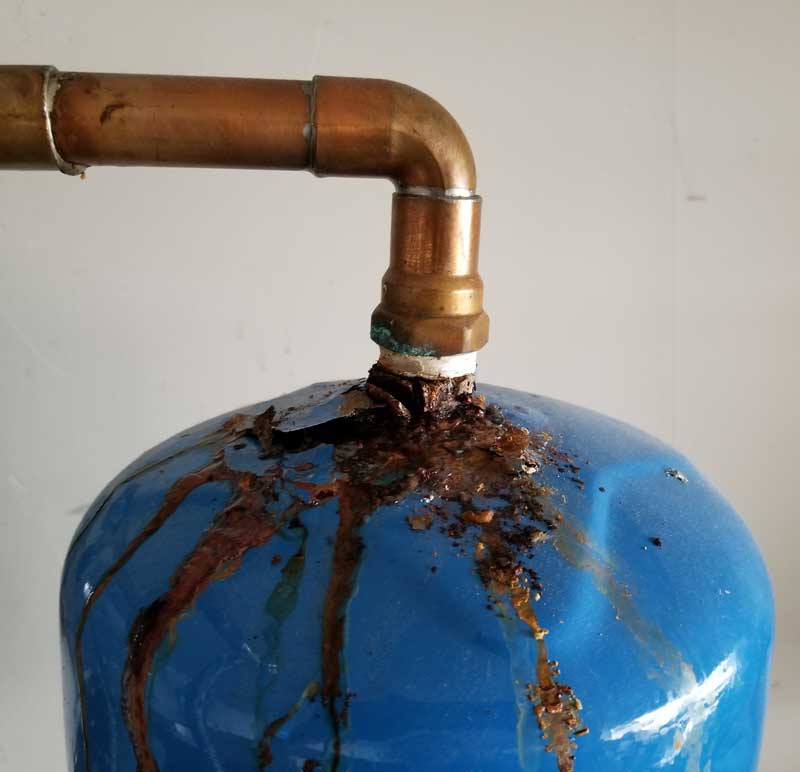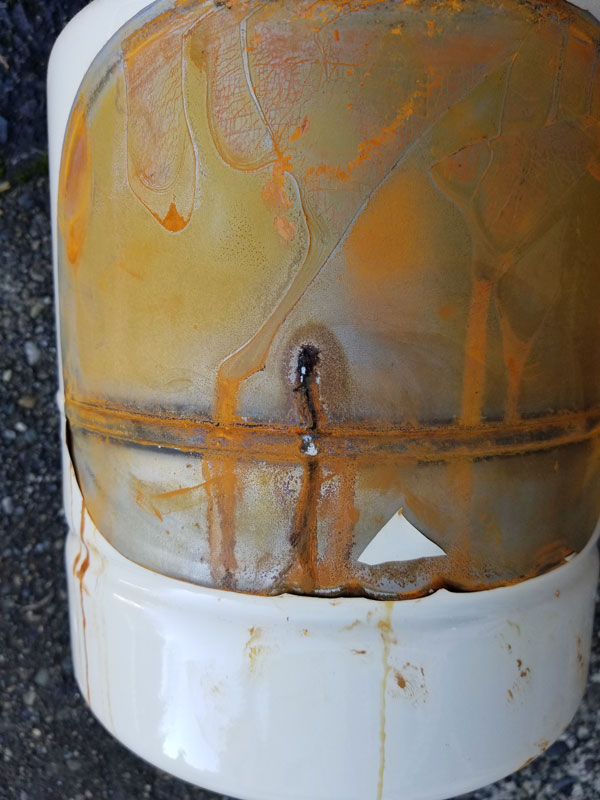LindaPinda
New Member
Up to my eyeballs in another project, I walked into the garage to discover water on the floor. Traced it to a drip from the "water heater safety tank" on my gas water heater. Some googling later, I see that (a) the pressure relief valve I've replaced twice might have only been a symptom of the tank going bad; and (b) I may need to replace that expansion tank.
I recall that at some point in the distant past I noticed a very thin line of rust running down the side of the tank (it's installed inverted, so that the air valve is on top--I can't even see the air valve without getting on a ladder) and evidence that water had once dripped out, but since I know nothing about this stuff and it didn't seem to be dripping in any way then, I ignored it. That was years ago (literally), but today it's dripping at a rate of about 1 drop/second.
I've rigged a lovely contraption to catch the dripping water in a bucket. Does this need to be dealt with IMMEDIATELY or can I do the collect-and-empty-the-bucket routine for a few days until I have time to deal?
Also, once there's water coming out of the air valve, is there any hope of redeeming the thing by draining and re-pressurizing or should I just plan on replacing it? I'm poor so any options for realistically saving money are appreciated. Thanks.

I recall that at some point in the distant past I noticed a very thin line of rust running down the side of the tank (it's installed inverted, so that the air valve is on top--I can't even see the air valve without getting on a ladder) and evidence that water had once dripped out, but since I know nothing about this stuff and it didn't seem to be dripping in any way then, I ignored it. That was years ago (literally), but today it's dripping at a rate of about 1 drop/second.
I've rigged a lovely contraption to catch the dripping water in a bucket. Does this need to be dealt with IMMEDIATELY or can I do the collect-and-empty-the-bucket routine for a few days until I have time to deal?
Also, once there's water coming out of the air valve, is there any hope of redeeming the thing by draining and re-pressurizing or should I just plan on replacing it? I'm poor so any options for realistically saving money are appreciated. Thanks.

Last edited by a moderator:

